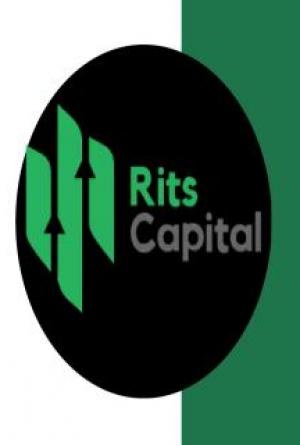Building an Engaged &
Accountable Workplace
Joel Harris Head, Headwinds Ltd.
A recent survey by Gallup Intl. finds that only 29% of employees are engaged with their work. 54% report they are not engaged and 17% indicate they are actively disengaged. HR Data Solutions found recently that a staggering 50% of employees said they had thought of resigning in the past six months. It is estimated that lost productivity from lack of engagement and accountability cost between $287 and $370 billion annually. Similar results can be found in the U.K. Leaders often exacerbate this problem by creating systems to control behavior. It is the wrong thing to do. What is needed instead is a new way of leading. This workbook examines employee engagement and accountability from a systems, employee and leadership perspective. It also invites the reader to examine aspects of their firm to determine what is contributing to employee engagement and commitment and what is not.
What’s the numbe r one concern among most entrepreneurs who are leading a growing firm or major department? If you answered “managing people” you are absolutely right. Particularly as a unit passes the 15+ employee threshold, helping employees stay committed, involved and accountable for results becomes increasing more difficult. That’s the point at which the solo- entrepreneur must relinquish some control over the business and delegate to other people.
At this growth stage, the solo-entrepreneur must decide the level of control to delegate. Some will try to over-engineer the process and create rigid systems and procedures in an effort to maintain control. Others will prefer to facilitate the process and become less hands-on. Which one are you?
To get a handle on the answer, stop and ask yourself a few questions:
· Do employees here have low morale?
· Are revenue and profits declining or flat-lined?
· Do employees deny personal accountability and point fingers instead? · Is there a lack of staff engagement?
· Is there a high level of turnover, compared to industry norms? · Do employees constantly gossip?
If you find yourself with more yes answers than no answers, chances are you are exerting too much control with the result that you are not tapping into the full knowledge and creativity of your people.
Employee engagement, by definition, is a voluntary commitment by the employee to produce the value desired by the employer with no surprises. It is a state of mind; an outward expression of inner responsibility felt by the employee to be committed and accountable which is driven by intrinsic rather than extrinsic motivators. Too much control by management makes the likelihood of intrinsic motivation unlikely.
The Elements of Employee Engagement
Employee engagement is created through a marriage of external systems and individual responsibility. The leader’s job has two elements:
· Develop a work environment that encourages employee engagement and accountability; and
· Hire individuals who want to be accountable (approximately 85% of people do) and enable them to reach their full potential.
While this formula sounds simple and even simplistic, it is by no means easy to execute; similar to the Road to Hana in Maui, Hawaii, it is beset with many twists and turns and you often find yourself wondering whether the exercise is really worth it.To understand why, let’s examine what employees say they want.
Research tells us that employees want the following things:
• CLEAR DIRECTION: People like to know what their job is and how they fit into the big picture. They want to know how they will be measured and they want some assurance that measurement will be fairly applied. They want access to the information, resources and internal contacts they will need to execute the work properly. Typically, these directions come from the immediate supervisor who must rely on the firm to have these elements in place. Sadly, fewer than 25% of firms actually engage in annual firm wide planning; fewer still cascade goals to departments and individuals.
• AUTONOMY: When challenges arise, the employee wants some level of autonomy in determining what to do. That presumes a level of trust in the employee as well as clarity about the purpose of the job and information relevant to the work. Personal autonomy leads to both a sense of authority and a sense of job security.
• A SENSE OF COMPETENCE: Meeting each challenge provides the employee with a sense of competence which is bolstered by new knowledge gained during the challenge. Positive feedback and skill recognition can enhance the sense of competence as well as the knowledge that the employee has lived up to high standards.
• MEANINGFUL WORK: This is work that is perceived to be important in some way and offers a challenge. It is typically work that is non-repetitive or non-cyclical, is part of an exciting vision and represents relevant and whole tasks – not pieces and parts of the work.
• A SENSE OF PURPOSE: Finally, the work has got to create a sense of progress toward something with a larger purpose. It must be work that can be clearly measured so progress can be illustrated and celebrations can result– the sense that “we made it.” Often, the supervisor can help the employee make this all important connection between the work and its overall contribution to the big picture. It is the difference between a mason saying “I am laying bricks” to “I am building a Church”.
If each of these elements is present you will get commitment, engagement and accountability. There is no formula for creating employee engagement though we do know the general elements that must be in place. These include a mix of management processes and intrinsic motivators plus the willingness of the employee to become committed.
Employee engagement and accountability are created through a consistent management process with six key drivers. These include:
1. Conscious leadership
2. Clear direction;
3. Aligned systems and processes;
4. Effective onboarding;
5. Engaging employees as individuals;
6. Creating a culture of execution
1. Conscious Leadership
At the heart of the system is leadership. Because the role of the leader is critical, we will examine this facet first. Research during the past twenty years has yielded more than a thousand definitions of leadership. Within these definitions, eight major themes emerge which together summarize the essence of leadership. An effective leader:
· Develops clear vision and values linked to operations. · Sets clear goals and priorities
· Gets the right people in place.
· Builds trusting relationships.
· Insists on realism.
· Follows through.
· Expands people’s capabilities.
· Gives credit where it is due.
True leaders not only have the ability to create a clear and compelling vision that describes the future of their organizations; they also have the ability to translate that vision into reality by motivating and gaining the support of others. In other words, true leadership is about vision and about relationships. Leaders must understand which intrinsic motivators lead to high performance and how to apply them.
Fundamentally, many people in leadership roles get it wrong when they try to manage and control worker activities. For accountability to happen, employees need to own their own jobs. They need to be given true responsibility with management acting as a resource and not acting like a policeman. The more we try to control things, the less accountability we get.
Do fewer controls mean a laissez faire approach? Of course not. Clear goals and measures, follow-up and an execution mentality are also important. The change is putting measurement and execution in their proper perspective, as tools, and not as ways to punish people.
2. Establishing clear direction
The next step in building accountability is to get focused on your core vision and values, and your strategy for getting there. Vision simply describes what you want to have, what you want to be and what you want to be doing at some point in the future, usually one to five years out. Values define the code that you will live by and expect all employees to live by. Do you value ethical behavior, quality, open communication, participation? Is an emphasis on quality at odds with an emphasis on speed or cost? Correct focus here is important because the values you articulate at this stage will form the basis of employee decision-making.
Strategy establishes what you will do to achieve your vision. If you are heading up a division or department, ask yourself what aspects of the global strategy your group is trying to address and how you can support it.
Goals and measures should be created in levels, starting with global goals and evolving to unit or individual objectives. Global goals may include addressing needs like making a profit, achieving revenue and growth targets, growing staff, meeting budget, achieving higher sales, hitting quality targets, and satisfying customers. Unit or department goals should relate specifically to a larger firm goal and include specific measures (e.g. % new client revenue, customer satisfaction scores, etc.). Individual goals represent a sub-section of a unit or department goal. Implementation requires clear, repetitive, communication which ties all levels together.
3. Align systems and processes
A precision marching band does not march in perfect formation by accident. It takes careful planning and coordination. Just think if each member of the band had a different idea of how to march across the field. We would likely have chaos with various band members bumping into each other. Coordinated and aligned, a precision marching band is a joy to watch.
Businesses are no different. Each member of the team needs to play his or her role, but not in lockstep because innovation would go right out the window. But they need to be coordinated, or aligned, in order to make the best use of limited resources and to realize efficiency.
Alignment means that all human systems and processes, mechanical systems and processes, and information systems and processes are lined up to support the overall direction of the business. If alignment is not done, resources will be wasted, employees will be confused, work will overlap, and the result will be inefficiency. At the same time employees will see the issue and be justifiably concerned about duplication of effort, or teams or groups working at odds with one another, unavailable or wasted resources and other undesirable effects.
When it comes to alignment, W. Edwards Deming, the great quality guru, put it best. He said, “If you put a good person up against a bad process, the bad process will win every time.” To operate efficiently and at least cost, you will need alignment within processes and between processes to most effectively drive the work of your organization.
4. Effective Employee Onboarding
This may be the most critical step of all. Onboarding describes a process for helping employees become productive members of an organization. The process extends from recruiting to hiring and orientation and generally through the first 90 days of employment. Effective onboarding programs translate into employee engagement and commitment, improved attendance, increased productivity and reduced turnover. Hunter Douglas, a maker of ceiling fans, found that improving their onboarding process reduced turnover from an eye-popping 70% at 6 months, to 16%. New employees are at their most vulnerable during their first few days of employment. For many, these first few days are consumed with endless forms and boring slide presentations about benefits, policies and procedures. Most people would rather have a root canal. What’s worse, these are lasting impressions and war stories abound:
· My office “wasn’t quite ready” and I had to sit at a very cramped desk in the hallway.
· My new boss had gotten stuck in the elevator and when he finally showed up he was upset and disrespectful.
· No one at the reception desk knew who I was or that I had been recently hired; they stuck me in a side room until my new boss could be located about an hour later.
· I had to share an office the first few weeks with a salesman who was very loud and always talking on the phone.
· I got handed off to a disgruntled employee who proceeded to tell me what a jerk the boss was and how I could get around certain rules.
Generally the biggest problem with onboarding rests in the interviewing process. Most people hire for skills and knowledge. They post an ad, review resumes, pick a few people to interview, and select the candidate based on comparable knowledge and experience. Often these decisions are made over lunch, or in a thirty minute conversation. Research shows that the average hiring manager decides who to hire in the first three minutes of an interview. The decision is based primarily on the resume and appearance. But the results of hiring this way can lead to some dismal results.
The real predictor of success on the job is fit and whether the individual has the demonstrated ability to get results in the job. Will the person fit in with your direction and your values? Are they willing to participate? Will they get in the game? Will they be accountable? Can they work well with the rest of your team? Experience is good but it alone does not mean that the person will be able to get results in your environment. Have they achieved results similar to what you expect? Have they been in situations similar to the ones that occur in your company?
5. Engaging employees as individuals
" Engaged employees are excited and enthusiastic about their jobs. They resist distractions, tend to forget about time, and routinely produce more than the job requires. They enjoy searching for ways to improve circumstances and volunteer for difficult assignments. They also encourage others to higher levels of performance. Finally, they are proud to be involved with their organization and are more likely to stay with the company."
If this excerpt from a recent research study conducted by Profiles International (PI) does not describe your workforce, you are not alone. In fact the PI study illustrated that workers across a broad cross section of small, medium, and large organizations in 24 industries are less motivated and want less responsibility than in previous generations.
Lack of engagement is a fixable problem, but it requires a different management mindset. At the risk of sounding "touchy-feely", the old days of barking orders and expecting people to snap to are over and generally resented unless the building is burning down.
The attitudinal key to building a highly engaged and accountable team is to work with people as individuals. You have to go one-on-one with people. Many managers make the mistake of believing that if you hired someone to do a job; they should be able to do it with no further dialogue with the manager. Employees are not psychic, at least not most of them. And employee abilities and motivations can be vastly different. Each employee needs direction and input, some more than others.
Another key issue has to do with the way many managers use language which serves to put them in a parent/child relationship with the employee rather than as colleagues. The feeling of being “talked down to” leaves the employee feeling insecure about the supervisor and the situation in which they find themselves. In this state the employee becomes hyper-sensitive to clues – real or imagined -- that will help them make sense of the situation. Often these first impressions color the view of the entire organization, not just HR or the immediate supervisor. And as the saying goes, “There is no second chance to make a good first impression.”
6. Creating a culture of execution
Once goals, measures and targets are established, regular follow up with each individual is important. This is true whether the employee is working on a long-term goal or a short term project, or as part of a team. Tom Peters says that what gets measured gets done. If you don't pay attention to what is going on, it is unlikely your employee will either.
Your job here has three elements – give feedback, remove obstacles and find resources. Constructive feedback is the key. If praise is warranted, then give it. If performance could be improved, the improvements need to be discussed in a positive way, looking for obstacles to be removed, skills to be developed, or additional resources that could help.
In research gathered by J. Sterling Livingston, founder of the Sterling Center for Applied Managerial Leadership, the data reveals:
· What managers expect of subordinates and the way they treat them largely determines their performance and career progress.
· A unique characteristic of superior managers is the ability to create high performance expectations that subordinates can fulfill
· Less effective managers fail to deliver similar expectations, and as a consequence, the productivity of their subordinates suffers.
· Subordinates, more often than not, appear to do what they believe they are expected to do.
Maintaining high expectations and a positive outlook are impossible to fake. The expectations have to be genuine and they generally start by expecting the most from yourself. Superior managers have confidence in their own ability to select and train subordinates.
While some firms still utilize an annual review cycle, evaluating results only once per year makes it difficult to manage execution. We recommend a minimum review each quarter but an ideal cycle is monthly and, for some businesses weekly, so that you are working with real time data. The review process should include all of the members of your management team and, if done once each month, should take no more than 1-2 hours. The process itself for a monthly or quarterly review cycle is fairly straight forward with only four steps:
1. Review and evaluate performance data for each of the key measures established in your annual plan.
2. Evaluate strengths and weaknesses and emerging new opportunities and threats.
3. Identify the causes of performance below plan and develop action steps to get the plan back on track, complete with measures, new targets, and assigned accountabilities.
4. Communicate the results of the review and planned actions.
Be persistent, be consistent
The last step may be the most difficult. And that is staying the course. Finding ways to develop the habits of accountability to make individual planning and execution, coaching and follow up, a way of life. As anyone who has ever created a New Year’s resolution knows, the hard part is not knowing what to do; the hard part is doing it consistently over time.
_______________________________________________________________________
If you enjoyed this short synopsis of the elements required to build an engaged and accountable work force, then you will enjoy our more indepth treatment, complete with diagnostic questions to analyze your exact situation, in The
Employee Engagement Blueprint.
Joel H. Head works with professional service firm leaders who want to create an environment that dramatically influences lasting employee commitment and accountability. He is the Managing Partner of Headwinds Ltd., is a former Partner with Ernst & Young, LLC and a former Principle with Mercer HR. For the past 15 years, he has been writing and speaking about, and leading workshops on strategy and employee accountability. For more information, visit http://www.headwindsltd.com.
Joel H. Head Managing Partner Headwinds Ltd. Cleveland, Ohio 216.539.3358







